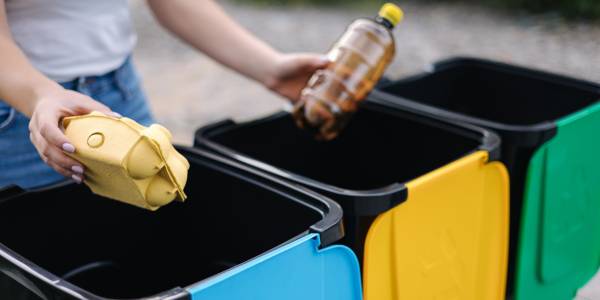The Pitfalls of Wishful Recycling: Sorting Through the Bin
February 7, 2024
Wishful recycling, a term that has gained prominence in recent years, refers to the practice of tossing items into the recycling bin with the hope that they will somehow be recycled, despite not being accepted by the local recycling program. We will explore the concept of wishful recycling, its consequences, and how individuals can contribute to a more effective and sustainable recycling system.
Understanding Wishful Recycling
While the intention behind wishful recycling is often positive, it can have detrimental effects on the overall recycling process and the environment. Common examples include plastic bags, greasy pizza boxes, or broken glass, which may contaminate the recycling stream and hinder the processing of other materials. The belief that recycling facilities can magically transform any discarded item into something new contributes to the persistence of wishful recycling.

Consequences of Wishful Recycling
- Contamination of Recycling Streams: Wishful recycling often leads to contamination, as non-recyclable items can mix with recyclables. Contaminated materials are challenging for recycling facilities to process, reducing the efficiency of the recycling system and increasing the likelihood of valuable resources being discarded.
- Increased Costs and Energy Consumption: Sorting through contaminated materials requires additional time, resources, and energy at recycling facilities. This results in increased operational costs and a higher carbon footprint, counteracting the environmental benefits of recycling.
- Reduced Market Value of Recyclables: Contamination lowers the quality of recycled materials, making them less desirable for manufacturers. This, in turn, reduces the market value of recycled goods, potentially making recycling programs less economically viable.
How to Combat Wishful Recycling
- Education and Awareness: Promoting awareness and educating the public about what can and cannot be recycled is crucial. Clear guidelines provided by local recycling programs can help individuals make informed decisions when disposing of their waste.
- Better Communication: Municipalities and recycling facilities can enhance communication to inform residents about changes in recycling guidelines. This can be done through various channels, such as social media, community workshops, and informational pamphlets.
- Improving Infrastructure: Investing in better recycling infrastructure, including advanced sorting technologies and facilities that can handle a wider range of materials, can contribute to a more efficient recycling process and reduce contamination.
While wishful recycling is motivated by good intentions, it presents obstacles to the success of recycling initiatives. Creating a more sustainable future requires collaborative efforts from individuals, communities, and governments. This involves enhancing awareness, communication, and infrastructure to optimize recycling’s efficacy and eco-friendliness. By carefully considering what we place in the recycling bin, we each contribute to nurturing a healthier environment.
Interested in learning more? Join us at SOAR 2024 taking place in Phoenix from April 15–18 and attend this exciting session: “Quantifying the Impact of Recycling Contamination on Desired Materials.”







Leave a comment